
If you have a one-sided headache and also suffering from neck and upper back pain then chances are it is a cervicogenic headache. It is termed cervicogenic because this headache originates from the cervical/ neck region. It could be confused with a migraine, tension headache, or other primary headache syndromes.
In this article, we will try to understand what is cervicogenic headache, how can a physiotherapist help you and what we can do about it at home.
Understanding cervicogenic headache
If a headache originates from any issue in the cervical or neck region, it is referred to as a cervicogenic headache. This type of headache is chronic and usually causes pain on one side of the forehead, which can extend to the temple and occipital area.
In some cases, nerve compression at the C3 level can cause this type of headache. A study has shown that addressing this cause by treating C3 radiculopathy can provide almost immediate relief from the headache1.
However, most cervicogenic headaches are muscular in origin, caused by muscle knots, fibromyalgia, or trigger points around the neck and upper back. We can manage such pain with physical therapy intervention and a regular home exercise program in our physiotherapy department.
A case study
Muscle knots are a hyperactive taught fibrous band that forms in the muscle. When it is activated it results in deep dull aching referred pain. As mentioned above, muscle knots around the neck and upper back can cause referred pain to the forehead and temple area.
Let me explain this with a case study. A 21-year-old female came to me with a complaint of headaches for the last 6 years. She had undergone all the necessary investigations, like an MRI scan, CT-scan with negative reports that ruled out any neurological problems or any ENT pathology.
However, she does have to complain of chronic neck pain and being a student she needs to work on a laptop for long hours. This made me look for muscle knots around the neck and shoulder blade muscles.
Depending on the location of trigger points and their severity it can also cause headaches. After a thorough physical diagnosis of the lady, I found a very prominent nodule in her trapezius muscle (bigger red dot). Mere mild press on the nodule reproduced the symptoms of headache.
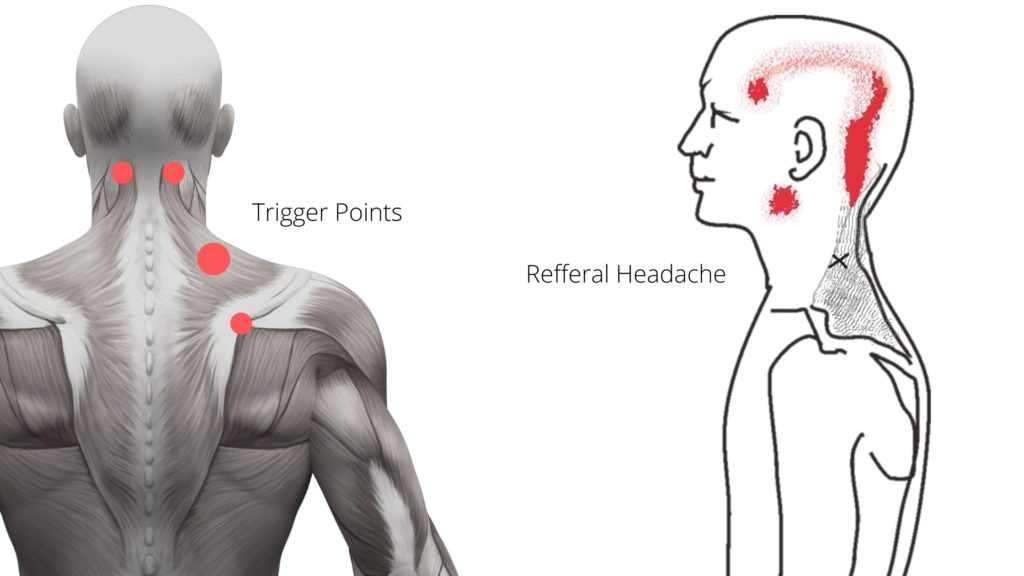
Other common area of nodule/band formation which can cause headache is the Sternocleidomastoid muscle.
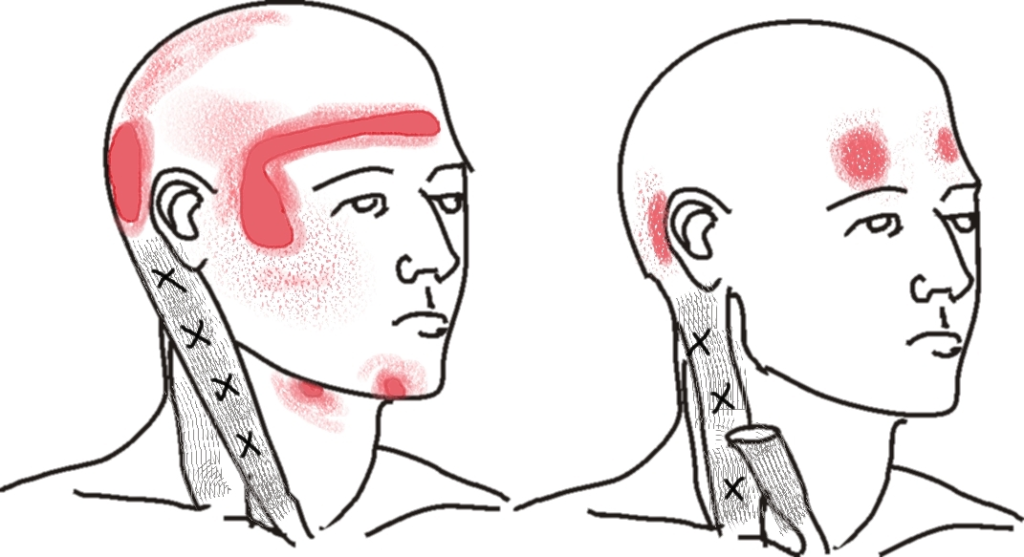
Precipitating factors: There are many reasons for the formation of myofascial trigger points, and one of them is the wrong posture. She is 21 and computer savvy. She works for long hours on the computer lying on her tummy. She excessively uses of cell phone grabbing it between her shoulder and temple bone.
Some headache is common among students and professional who require constant long-period eye focus. If you have stress/ irritation in the eyes you should follow these 7 Easy Eye Muscle Exercises for Eye Strain to cure headaches.
Exercises for cervicogenic headache
There are several exercises that can provide relief for cervicogenic headaches. One effective exercise is neck stretches. Slowly tilt your head to one side, bringing your ear towards your shoulder. Hold for 10-15 seconds and repeat on the other side. These exercises can help alleviate pain and tension in the neck and shoulders, reducing the likelihood of cervicogenic headaches.
Neck stretching exercise for headache
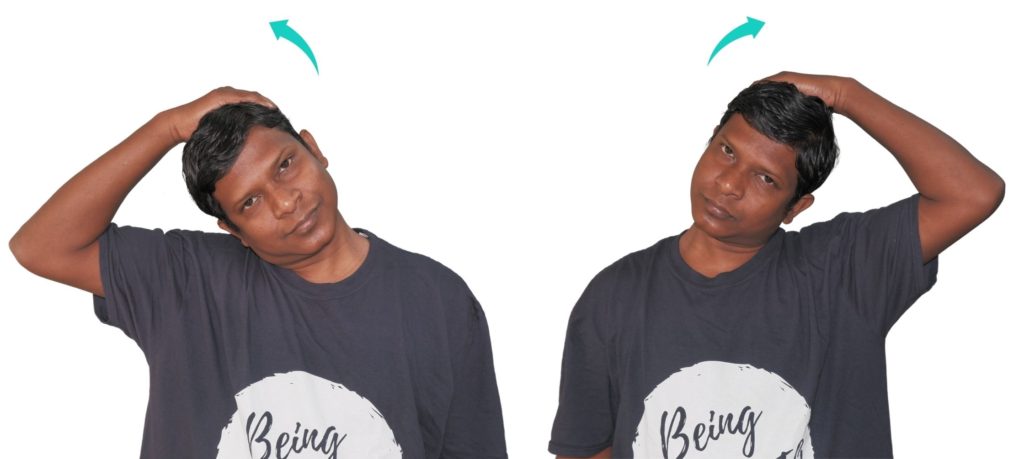
Very simple yet very effective neck stretching exercise that can help improve headaches. For this sit or stand straight, to stretch the left side neck muscle take your right hand and place it over the left side temple area just above the ear. Now, pull the head to the right side to the point where you feel a comfortable stretch on the left side neck muscle.
Hold this position for 30 seconds and then let it relax then repeat the same procedure on the right side neck muscle using the left hand. Repeat it 2 to 3 times in a single session.
Shoulder roll exercise
Another beneficial physical activity that you can engage in is shoulder rolls. To perform this exercise, simply lift your shoulders towards your ears and proceed to roll them backwards and downwards. It is recommended that you repeat this motion several times for maximum effect.
Stretching of shoulder blade muscle
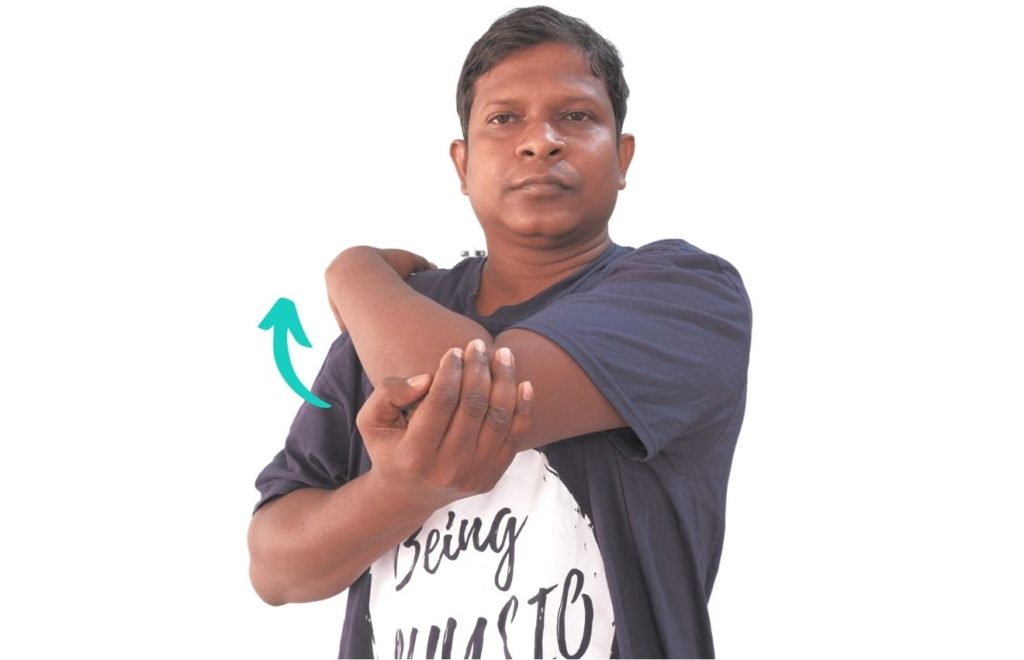
We should also consider stretching of shoulder blade muscle in the upper back area. The starting position would be the same as the previous one. Sit or stand straight, then take your left arm in front of your chest to stretch the left side shoulder blade muscle. Now, hold the elbow with your right hand and press it towards the chest.
You should feel a comfortable stretch on the shoulder blade muscle, hold this position for 30 seconds and then relax. Now repeat the process on another side. Do it 2 to 3 times in a session.
Chin tuck
For those experiencing neck pain or discomfort, a helpful exercise to try is chin tucks. To begin, ensure that your head is in a neutral position. Then, gradually and gently tuck your chin towards your chest. Hold this position for a few seconds before releasing. This exercise can provide relief and help improve neck mobility when done correctly.
How your physiotherapist can help you
Physiotherapy is very helpful in such cases. Here the aim of treatment would be to soften the nodule/band which is formed over the muscle. This can be done through gentle DTFM (Deep Transverse Friction Massage) followed by UST (Ultra Sonic Therapy) and IFT (Interferential Therapy). Once the severe pain subsides they can do neck stretching exercises. Referring back to our case study, after 5 to 6 sessions there was a remarkable improvement in her headache. But she needs to continue it for at least a month or two for long term results.
Occipital headache
If you have pain in the back of the head just behind the ear with the heaviness of the head then chances are it is due to occipital headache. An occipital headache, or neuralgia, is a condition in which the nerves that run from base of the cervical spine up through the scalp, called the occipital nerves, are inflamed or injured. You might feel pain in the back of your head or the base of your skull.
In severe conditions, one may feel pain on one side scalp, and pain around the eyes. If you palpate the base of the back head you can spot a tender spot. If you regularly give a self massage using your thumb on that point can give you tremendous relief. Watch this video for a full demonstration of self-massage.
Final statement
In conclusion, incorporating regular exercise into your daily routine can be an effective way to manage cervicogenic headaches. However, it is important to consult with a healthcare professional before starting any new exercise regimen, especially if you have a pre-existing condition. By following a safe and gradual exercise plan tailored to your individual needs, you can reduce the frequency and intensity of your headaches and improve your overall quality of life.
Keep Reading: 7 Easy Eye Muscle Exercises for Eye Strain

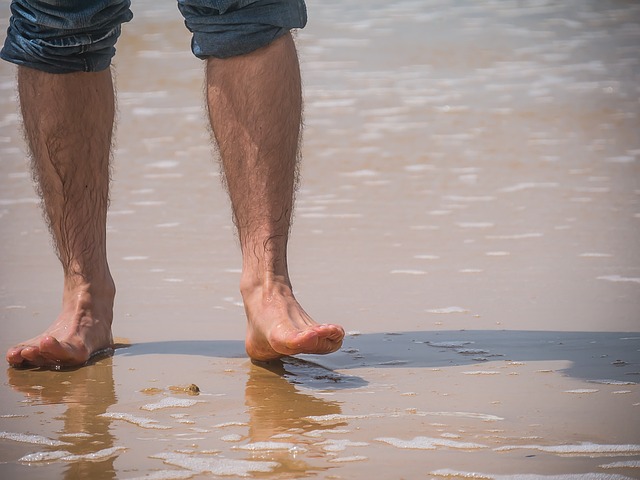

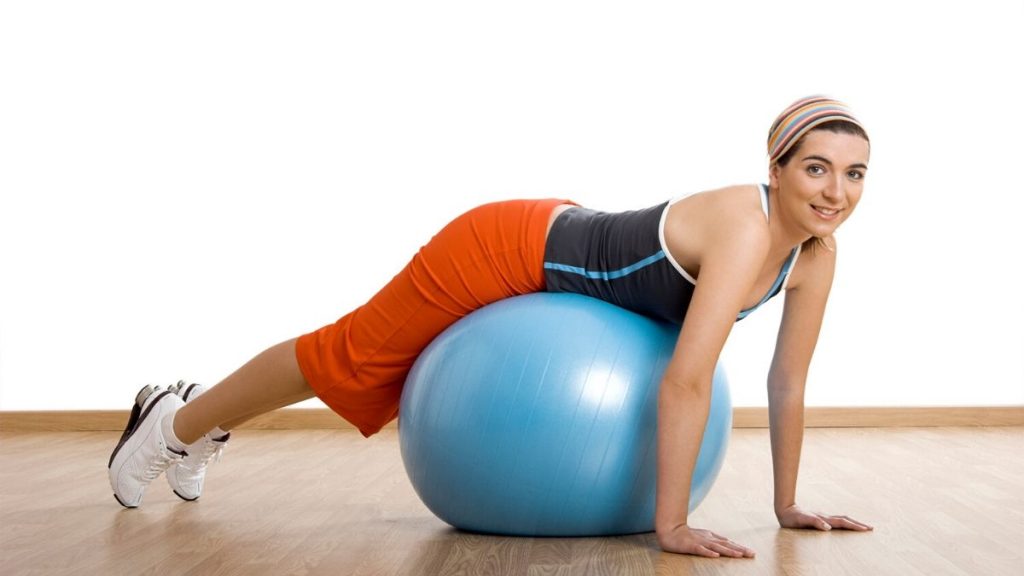
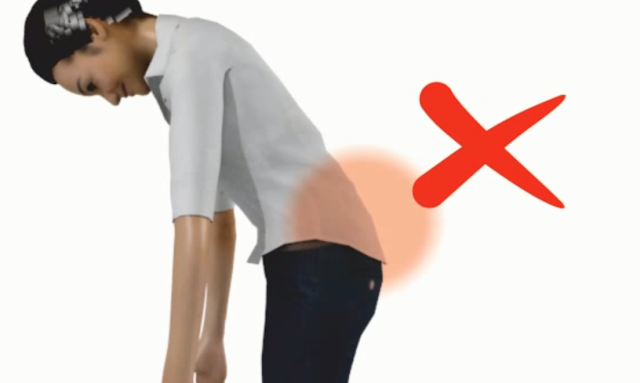
Pingback: What is Spondylosis Cervical? 6 Easy Exercises for Quick Relief - Physiosunit
similar structure to blood, it began to be studied as early as 1913 as a therapeutic substance. A 1950 paper by the University of Butler outlines many of the treatments that had been tried to that point.CBD & Period Cramps or Menstrual Cramps